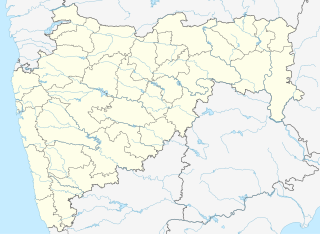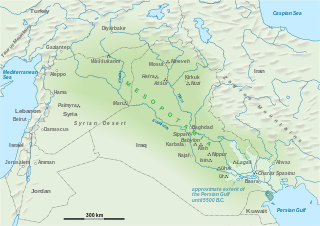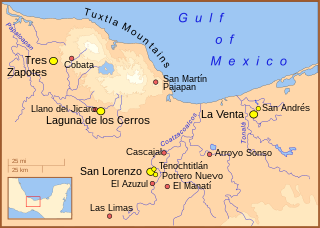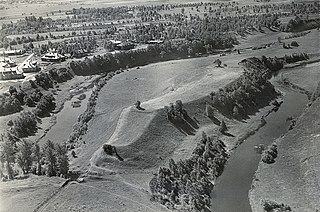 W
WA civilization is any complex society that is characterized by urban development, social stratification, a form of government, and symbolic systems of communication.
 W
WAl-Magar was a prehistoric culture of the Neolithic whose epicenter lied in modern-day southwestern Najd in Saudi Arabia. Al-Magar is possibly one of the first cultures in the world where widespread domestication of animals occurred, particularly the horse, during the Neolithic period.
 W
WAncient Egypt was a civilization of ancient North Africa, concentrated along the lower reaches of the Nile River, situated in the place that is now the country Egypt. Ancient Egyptian civilization followed prehistoric Egypt and coalesced around 3100 BC with the political unification of Upper and Lower Egypt under Menes. The history of ancient Egypt occurred as a series of stable kingdoms, separated by periods of relative instability known as Intermediate Periods: the Old Kingdom of the Early Bronze Age, the Middle Kingdom of the Middle Bronze Age and the New Kingdom of the Late Bronze Age.
 W
WAncient Greece was a civilization belonging to a period of Greek history from the Greek Dark Ages of the 12th–9th centuries BC to the end of antiquity. This era was immediately followed by the Early Middle Ages and the Byzantine period. Roughly three centuries after the Late Bronze Age collapse of Mycenaean Greece, Greek urban poleis began to form in the 8th century BC, ushering in the Archaic period and colonization of the Mediterranean Basin. This was followed by the age of Classical Greece, from the Greco-Persian Wars to the 5th to 4th centuries BC. The conquests of Alexander the Great of Macedon spread Hellenistic civilization from the western Mediterranean to Central Asia. The Hellenistic period ended with the conquest of the eastern Mediterranean world by the Roman Republic, and the annexation of the Roman province of Macedonia in Roman Greece, and later the province of Achaea during the Roman Empire.
 W
WIn historiography, ancient Rome is Roman civilization from the founding of the Italian city of Rome in the 8th century BC to the collapse of the Western Roman Empire in the 5th century AD, encompassing the Roman Kingdom, Roman Republic and Roman Empire until the fall of the western empire. The civilisation began as an Italic settlement in the Italian Peninsula, traditionally dated to 753 BC, that grew into the city of Rome and which subsequently gave its name to the empire over which it ruled and to the widespread civilisation the empire developed. The civilization was led and ruled by the Romans, alternately considered an ethnic group or a nationality. The Roman Empire expanded to become one of the largest empires in the ancient world, still ruled from the city, with an estimated 50 to 90 million inhabitants and covering 5 million square kilometres at its height in AD 117.
 W
WThe Aztecs were a Mesoamerican culture that flourished in central Mexico in the post-classic period from 1300 to 1521. The Aztec peoples included different ethnic groups of central Mexico, particularly those groups who spoke the Nahuatl language and who dominated large parts of Mesoamerica from the 14th to the 16th centuries. Aztec culture was organized into city-states (altepetl), some of which joined to form alliances, political confederations, or empires. The Aztec Empire was a confederation of three city-states established in 1427: Tenochtitlan, city-state of the Mexica or Tenochca; Texcoco; and Tlacopan, previously part of the Tepanec empire, whose dominant power was Azcapotzalco. Although the term Aztecs is often narrowly restricted to the Mexica of Tenochtitlan, it is also broadly used to refer to Nahua polities or peoples of central Mexico in the prehispanic era, as well as the Spanish colonial era (1521–1821). The definitions of Aztec and Aztecs have long been the topic of scholarly discussion ever since German scientist Alexander von Humboldt established its common usage in the early nineteenth century.
 W
WCivilisation—in full, Civilisation: A Personal View by Kenneth Clark—is a television documentary series written and presented by the art historian Kenneth Clark.
 W
WA cradle of civilization is a location where civilization is understood to have independently emerged. According to current thinking, there was no single "cradle" of civilization; instead, several cradles of civilization developed independently. Ancient Egypt, Mesopotamia, Ancient India and Ancient China are believed to be the earliest. The extent to which there was significant influence between the early civilizations of the Near East and those of East Asia is disputed. Scholars accept the fact that the civilizations of Mesoamerica, those that mainly existed in modern-day Mexico, and the civilization in Norte Chico, a region in the north-central coastal region of Peru, emerged independently from those in the Old World.
 W
WDilmun, or Telmun, was an ancient Semitic-speaking polity in Arabia mentioned from the 3rd millennium BC onwards. Based on contextual evidence, it was located in the Persian Gulf, on a trade route between Mesopotamia and the Indus Valley Civilisation, close to the sea and to artesian springs. A number of scholars have suggested that Dilmun originally designated the eastern province of Saudi Arabia, notably linked with the major Dilmunite settlements of Umm an-Nussi and Umm ar-Ramadh in the interior and Tarout on the coast. Dilmun encompassed Bahrain, Kuwait, Qatar and the eastern portion regions of Saudi Arabia. This area is certainly what is meant by references to "Dilmun" among the lands conquered by King Sargon of Akkad and his descendants.
 W
WThe Early Dynastic period is an archaeological culture in Mesopotamia that is generally dated to c. 2900–2350 BC and was preceded by the Uruk and Jemdet Nasr periods. It saw the development of writing and the formation of the first cities and states. The ED itself was characterized by the existence of multiple city-states: small states with a relatively simple structure that developed and solidified over time. This development ultimately led to the unification of much of Mesopotamia under the rule of Sargon, the first monarch of the Akkadian Empire. Despite this political fragmentation, the ED city-states shared a relatively homogeneous material culture. Sumerian cities such as Uruk, Ur, Lagash, Umma, and Nippur located in Lower Mesopotamia were very powerful and influential. To the north and west stretched states centered on cities such as Kish, Mari, Nagar, and Ebla.
 W
WElam was an ancient civilization centered in the far west and southwest of modern-day Iran, stretching from the lowlands of what is now Khuzestan and Ilam Province as well as a small part of southern Iraq. The modern name Elam stems from the Sumerian transliteration elam(a), along with the later Akkadian elamtu, and the Elamite haltamti. Elamite states were among the leading political forces of the Ancient Near East. In classical literature, Elam was also known as Susiana, a name derived from its capital Susa.
 W
WGandhāra was an ancient region in the Peshawar basin in the far north-west of the ancient Indian subcontinent, corresponding to present-day north-west Pakistan and north-east Afghanistan. The centre of the region was at the confluence of the Kabul and Swat rivers, bounded by the Sulaiman Mountains on the west and the Indus River on the east. The Safed Koh mountains separated it from the Kohat region to the south. This being the core area of Gandhara, the cultural influence of "Greater Gandhara" extended across the Indus river to the Taxila region and westwards into the Kabul and Bamiyan valleys in Afghanistan, and northwards up to the Karakoram range. During the Achaemenid period and Hellenistic period, its capital city was Pushkalavati, modern Charsadda. Later the capital city was moved to Peshawar by the Kushan emperor Kanishka the Great in about 127 AD.
 W
WInamgaon is a post-Harappan agrarian village and archaeological site located in Maharashtra, western India. Situated along the right bank of the Ghod River, it is considered to be the 'regional centre' of the Bhima Valley.
 W
WThe Indus Valley Civilisation (IVC) was a Bronze Age civilisation in the northwestern regions of South Asia, lasting from 3300 BCE to 1300 BCE, and in its mature form from 2600 BCE to 1900 BCE. Together with ancient Egypt and Mesopotamia, it was one of three early civilisations of the Near East and South Asia, and of the three, the most widespread, its sites spanning an area stretching from northeast Afghanistan, through much of Pakistan, and into western and northwestern India. It flourished in the basins of the Indus River, which flows through the length of Pakistan, and along a system of perennial, mostly monsoon-fed, rivers that once coursed in the vicinity of the seasonal Ghaggar-Hakra river in northwest India and eastern Pakistan.
 W
WIndustrial civilization refers to the state of civilization following the Industrial Revolution, characterised by widespread use of powered machines. The transition of an individual region from pre-industrial society into an industrial society is referred to as the process of industrialisation, which may occur in different regions of the world at different times. Individual regions may specialise further as the civilisation continues to advance, resulting in some regions transitioning to a service economy, or information society, or post-industrial society. The present era is sometimes referred to as the Information Age. De-industrialization of a region may occur for a range of reasons.
 W
WThe Kingdom of Larantuka was a kingdom in present-day East Nusa Tenggara, Indonesia. It was the one of the few, if not the only, indigenous Roman Catholic polities in the territory of modern Indonesia. Acting as a tributary state of the Portuguese Crown, the Raja (King) of Larantuka controlled holdings on the islands of Flores, Solor, Adonara and Lembata. It was later purchased by Dutch East Indies from the Portuguese, prior to its annexation in 1904.
 W
WMesopotamia is a historical region of Western Asia situated within the Tigris–Euphrates river system, in the northern part of the Fertile Crescent. It occupies the area of present-day Iraq, Kuwait, and parts of Iran, Syria, and Turkey.
 W
WThe Mississippian culture was a Native American civilization that flourished in what is now the Midwestern, Eastern, and Southeastern United States from approximately 800 CE to 1600 CE, varying regionally. It was known for building large, earthen platform mounds, and often other shaped mounds as well. It was composed of a series of urban settlements and satellite villages (suburbs) linked together by loose trading networks. The largest city was Cahokia, believed to be a major religious center located in what is present-day southern Illinois.
 W
WNazism in the Americas has existed since the 1930s and still exists today. The membership of the earliest groups reflected the sympathies of some German-Americans and German Latin-Americans toward Nazi Germany, embracing the National Socialist spirit in Europe and establishing it within the Americas. Throughout the inter-war period and the outbreak of World War II, American Nazi parties engaged in activities such as sporting Nazi propaganda, storming newspapers, spreading Nazi-sympathetic materials and infiltrating other non-political organizations.
 W
WThe Olmecs were the earliest known major Mesoamerican civilization. Following a progressive development in Soconusco, they occupied the tropical lowlands of the modern-day Mexican states of Veracruz and Tabasco. It has been speculated that the Olmecs derived in part from the neighboring Mokaya or Mixe–Zoque cultures.
 W
WPhoenicia was an ancient Semitic-speaking thalassocratic civilization that originated in the Levant region of the eastern Mediterranean, primarily modern Lebanon. It was concentrated along the coast of Lebanon and included some coastal areas of modern Syria and Galilee, reaching as far north as Arwad and as far south as Acre and possibly Gaza. At its height between 1100 and 200 BC, Phoenician civilization spread across the Mediterranean, from the Levant to the Iberian Peninsula.
 W
WPost-classical history, as used in world history, generally runs from about 500 AD to 1500 AD. The period is characterized by the expansion of civilizations geographically and development of trade networks between civilizations.
 W
WThe Proto-Elamite period, also known as Susa III, is the time from ca. 3100 BC to 2700 BC in the area of Elam. In archaeological terms this corresponds to the late Banesh period, and it is recognized as the oldest civilization in Iran.
 W
WChristianity has been intricately intertwined with the history and formation of Western society. Throughout its long history, the Church has been a major source of social services like schooling and medical care; an inspiration for art, culture and philosophy; and an influential player in politics and religion. In various ways it has sought to affect Western attitudes towards vice and virtue in diverse fields. Festivals like Easter and Christmas are marked as public holidays; the Gregorian Calendar has been adopted internationally as the civil calendar; and the calendar itself is measured from the date of Jesus's birth.
 W
WSumer is the earliest known civilization in the historical region of southern Mesopotamia, emerging during the Chalcolithic and early Bronze Ages between the sixth and fifth millennium BC. It is also one of the first civilizations in the world, along with Ancient Egypt, Norte Chico, the Minoan civilization, and the Indus Valley Civilization. Living along the valleys of the Tigris and Euphrates, Sumerian farmers grew an abundance of grain and other crops, the surplus from which enabled them to form urban settlements. Proto-writing dates back before 3000 BC. The earliest texts come from the cities of Uruk and Jemdet Nasr, and date to between c. 3500 and c. 3000 BC.
 W
WThe Vedic period, or Vedic age, is the period in the late Bronze Age and early Iron Age of the history of India when the Vedas were composed in the northern Indian subcontinent, between the end of the urban Indus Valley Civilisation and a second urbanisation which began in the central Indo-Gangetic Plain c. 600 BCE. The Vedas are liturgical texts which formed the basis of the influential Brahmanical ideology, which developed in the Kuru Kingdom, a tribal union of several Indo-Aryan tribes. The Vedas contain details of life during this period that have been interpreted to be historical and constitute the primary sources for understanding the period. These documents, alongside the corresponding archaeological record, allow for the evolution of the Indo-Aryan and Vedic culture to be traced and inferred.
 W
WThe Viking Age was the period during the Middle Ages when Norsemen known as Vikings undertook large-scale raiding, colonizing, conquest and trading throughout Europe, and reached North America. It followed the Migration Period and the Germanic Iron Age. The Viking Age applies not only to their homeland of Scandinavia, but to any place significantly settled by Scandinavians during the period. The Scandinavians of the Viking Age are often referred to as Vikings as well as Norsemen, although few of them were Vikings in the technical sense.
 W
WThe Viking Age in Estonia was a period in the history of Estonia, part of the Viking Age. It was not a unified country at the time, and the area of Ancient Estonia was divided among loosely allied regions. It was preceded by the Bronze and Early Iron Ages in Estonia, during which an agrarian society had developed, the Migration Period, and Pre-Viking Age with the Viking Age itself lasting between 800–1050 AD. It is often considered to be part of the Iron Age period which started around 400 AD and ended around 1200 AD, soon after Estonian Vikings were recorded in the Eric Chronicle to have sacked Sigtuna in 1187.
 W
WThe Western world, also known as the West, refers to various regions, nations and states, depending on the context, most often consisting of the majority of Europe, Northern America and Australasia. The Western world is also known as the Occident, in contrast to the Orient or Eastern world. It might mean the Northern half of the North–South divide. Western culture is commonly said to include: Australia and New Zealand, Canada, all European member countries of the EFTA and EU, the European microstates, the NATO military alliance, the United Kingdom and the United States.